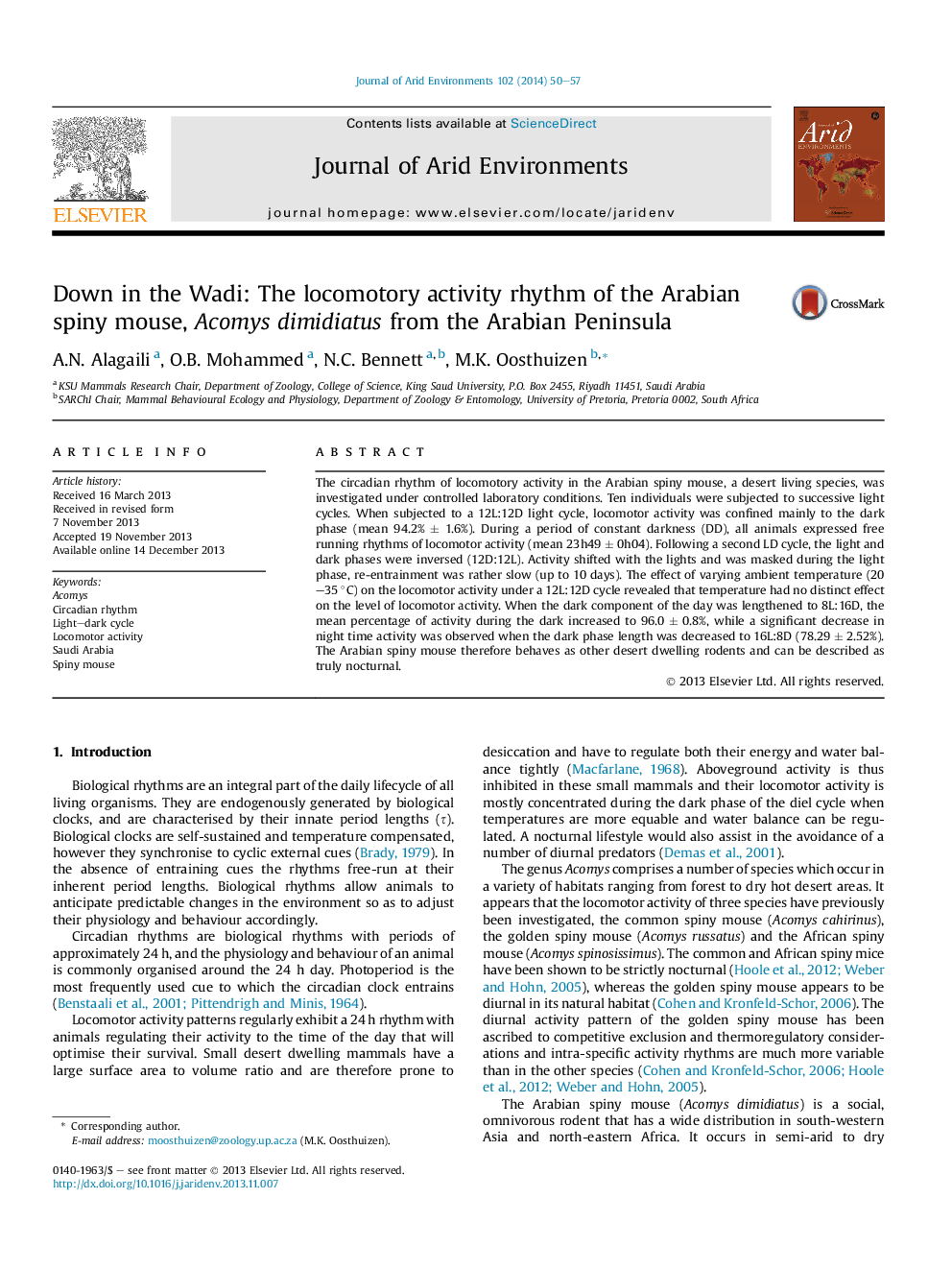| Article ID | Journal | Published Year | Pages | File Type |
|---|---|---|---|---|
| 4393026 | Journal of Arid Environments | 2014 | 8 Pages |
Abstract
The circadian rhythm of locomotory activity in the Arabian spiny mouse, a desert living species, was investigated under controlled laboratory conditions. Ten individuals were subjected to successive light cycles. When subjected to a 12L:12D light cycle, locomotor activity was confined mainly to the dark phase (mean 94.2% ± 1.6%). During a period of constant darkness (DD), all animals expressed free running rhythms of locomotor activity (mean 23h49 ± 0h04). Following a second LD cycle, the light and dark phases were inversed (12D:12L). Activity shifted with the lights and was masked during the light phase, re-entrainment was rather slow (up to 10 days). The effect of varying ambient temperature (20-35 °C) on the locomotor activity under a 12L:12D cycle revealed that temperature had no distinct effect on the level of locomotor activity. When the dark component of the day was lengthened to 8L:16D, the mean percentage of activity during the dark increased to 96.0 ± 0.8%, while a significant decrease in night time activity was observed when the dark phase length was decreased to 16L:8D (78.29 ± 2.52%). The Arabian spiny mouse therefore behaves as other desert dwelling rodents and can be described as truly nocturnal.
Related Topics
Physical Sciences and Engineering
Earth and Planetary Sciences
Earth-Surface Processes
Authors
A.N. Alagaili, O.B. Mohammed, N.C. Bennett, M.K. Oosthuizen,
